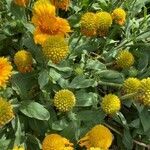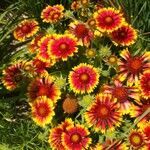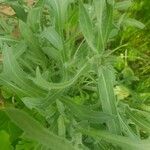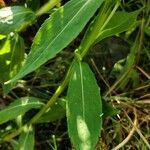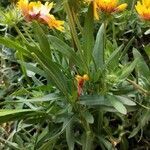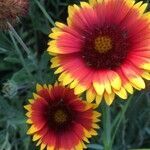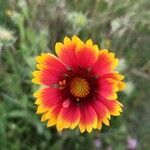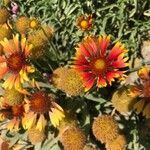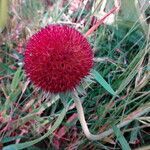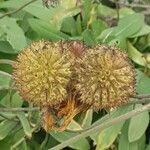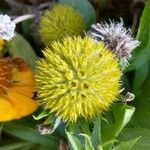Perennials (sometimes flowering first year), 20-80 cm. Leaves basal and cauline or cauline; petiolar bases 5-15 cm; blades oblanceolate to lanceolate, 5-15 cm x 5-30(-40) mm, margins raggedly pinnately lobed to toothed or entire, faces scabrellous and/or sparsely to densely villous (hairs jointed). Peduncles (5-)20-35+ cm. Phyllaries 24-40+ ovate to lance-attenuate, 10-15+ mm, ciliate with jointed hairs (also strigose and gland-dotted). Receptacular setae 2-6 mm. Ray florets (6-)12-18+; corollas yellow or yellow/purple, rarely tubular and 5-lobed, usually distally laminate and 3-lobed, 15-35+ mm. Disc florets 60-120+; corollas usually purple or purple-tipped, sometimes yellow, tubes 0.5-1.5 mm, throats cylindric to urceolate, 4.5-5.5 mm, lobes lance-ovate to triangular-attenuate, 1-2 mm, jointed hairs 0.3+ mm. Cypselae clavate (outer) to obpyramidal (inner), 2.5-6 mm, hairs 1.5-2.5 mm, inserted at bases; pappi of 8 ovate to lanceolate, aristate scales 5-6 mm (scarious bases 1.5-3 x 0.4-1.5 mm).
Hairy perennial 2–7 dm from a slender taproot, also spreading by slender creeping roots; lvs narrow, linear-oblong to lance-ovate, or the lower oblanceolate, to 15 × 2.5 cm, entire to somewhat pinnatifid; heads solitary or few, long-pedunculate, the disk 1.5–3 cm wide, purple or brownish-purple (yellow); rays 6–16, yellow, usually purplish at base, 1–3.5 cm; setae of the receptacle evidently exceeding the achenes; style-appendages elongate; 2n=36, 72. Plains, meadows, and other open places; B.C. to Sask. and Minn., s. to Ariz. and N.M., and occasionally intr. or escaped eastward. May–Sept.
A herb. It keeps growing from year to year. It grows 20-90 cm tall. There are leaves at the base and on the stems. They are 4-5 cm long by 3-8 mm wide.
